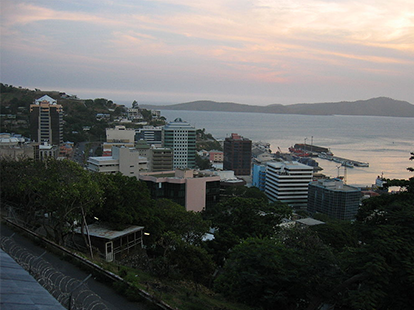Climate change generates extreme weather events which pose significant risks to the population, the environment, and the economy. Climate change is therefore a critical challenge with serious implications for the development of the country and its environment.
The existing aging Alotau provincial wharf in Papua New Guinea is highly vulnerable to the adverse effects of climate change, especially sea level rise and storm surges affecting the soil quality and thus agriculture and flora, as well as underground water. The provincial government confirms that the wharf is in urgent need of rehabilitation and climate proofing, which will directly benefit the poorest communities in the province.
In March 2016, the Government of Papua New Guinea has obtained a USD24.25 Million Grant from the Asian Development Bank for the project “Building Resilience to Climate Change in PNG”, which is being implemented by NTU since 2018 and until 2021. The project’s outcome will result in increased resilience to the impacts of climate change and climate variability. Thus, the goal is to improve the capacity of vulnerable islands, government agencies and civil society to plan and respond to the impacts of climate change.

How we are doing it
Climate change being a critical challenge for PNG, one the key activities of the project consisted in the design and implementation of climate change risk management awareness and education programmes.
Within this activity, NTU created an awareness and education programme in order for the beneficiaries to be aware and informed about the characteristics and effects of climate change on their activities. In addition, the information provided had the aim to improve the capacity of the beneficiaries to manage the impacts of climate change, to develop climate change mitigation and resilience solutions, and to reduce the communities’ vulnerability to climate change. The process of awareness and education program design began with the Communication Needs Assessment for the target groups of the project.
Based on the outcomes of the Communication Needs Assessment, the Awareness and Education Program for Papua New Guinea Ports Corporation Limited included:
- Awareness and Education Program Objectives and activities
- Key messages
- Indications of Achievement
- Possibility for scaling up the awareness raising efforts to larger audience


